
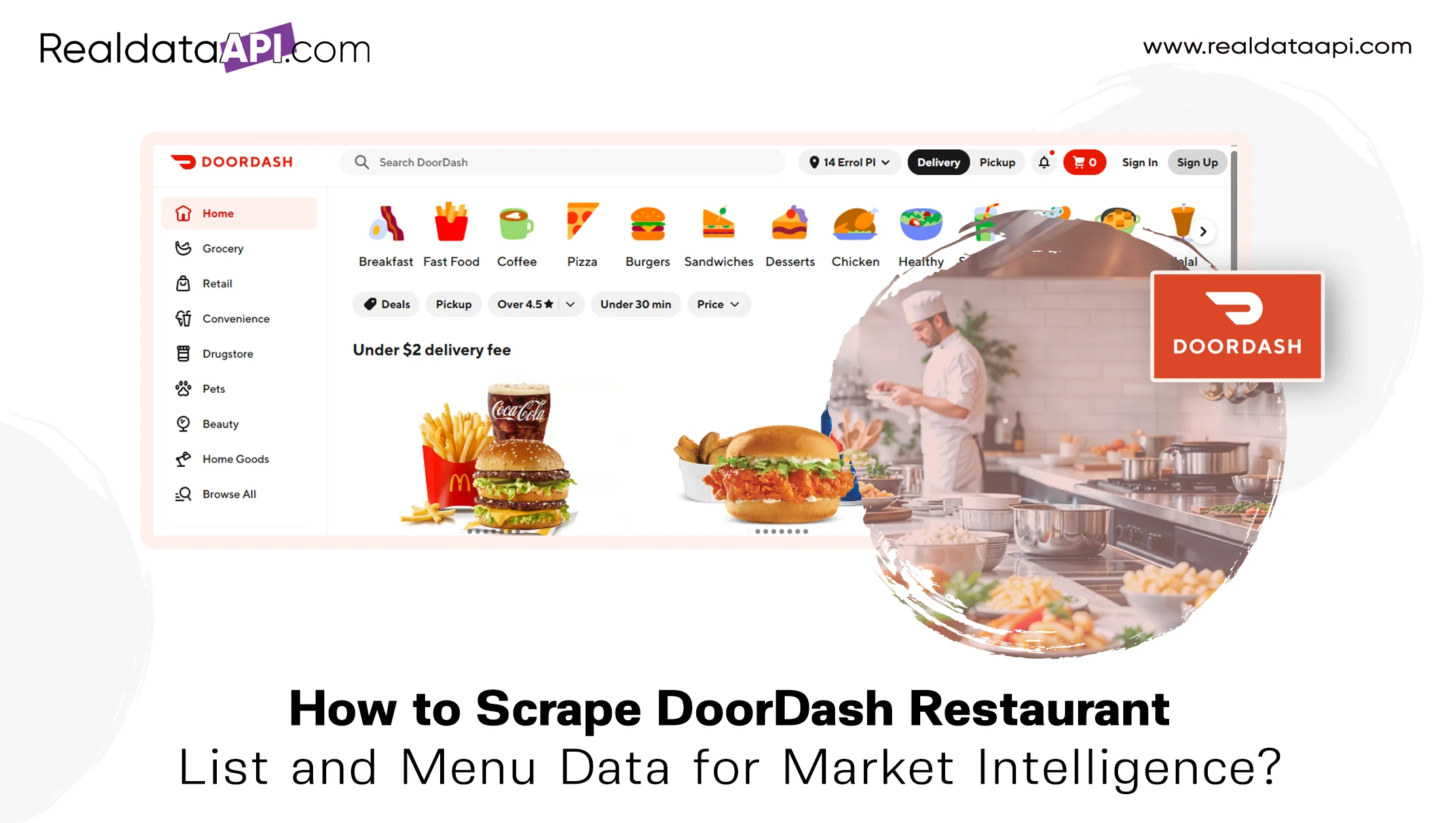
Introduction
In the rapidly expanding online food delivery industry, access to accurate and timely data has become crucial for businesses, developers, and analysts alike. Platforms like DoorDash have transformed the way customers interact with restaurants, and with thousands of restaurant listings and detailed menu information, DoorDash offers a goldmine of data that can fuel competitive research, market analysis, price intelligence, and customer experience improvements.
If you're looking to scrape DoorDash restaurant list or dig deeper into scrape DoorDash restaurant menu data, you're on the right track. Whether you’re building a food comparison app, conducting competitor benchmarking, or optimizing your delivery service offerings, understanding the intricacies of DoorDash restaurant list scraping is an invaluable skill.
This blog walks you through the complete process of web scraping DoorDash restaurant list, how to gather rich DoorDash restaurant menu data extraction, and how to use that data effectively and ethically to stay ahead in the food delivery game.
Why Scrape the DoorDash Restaurant List?
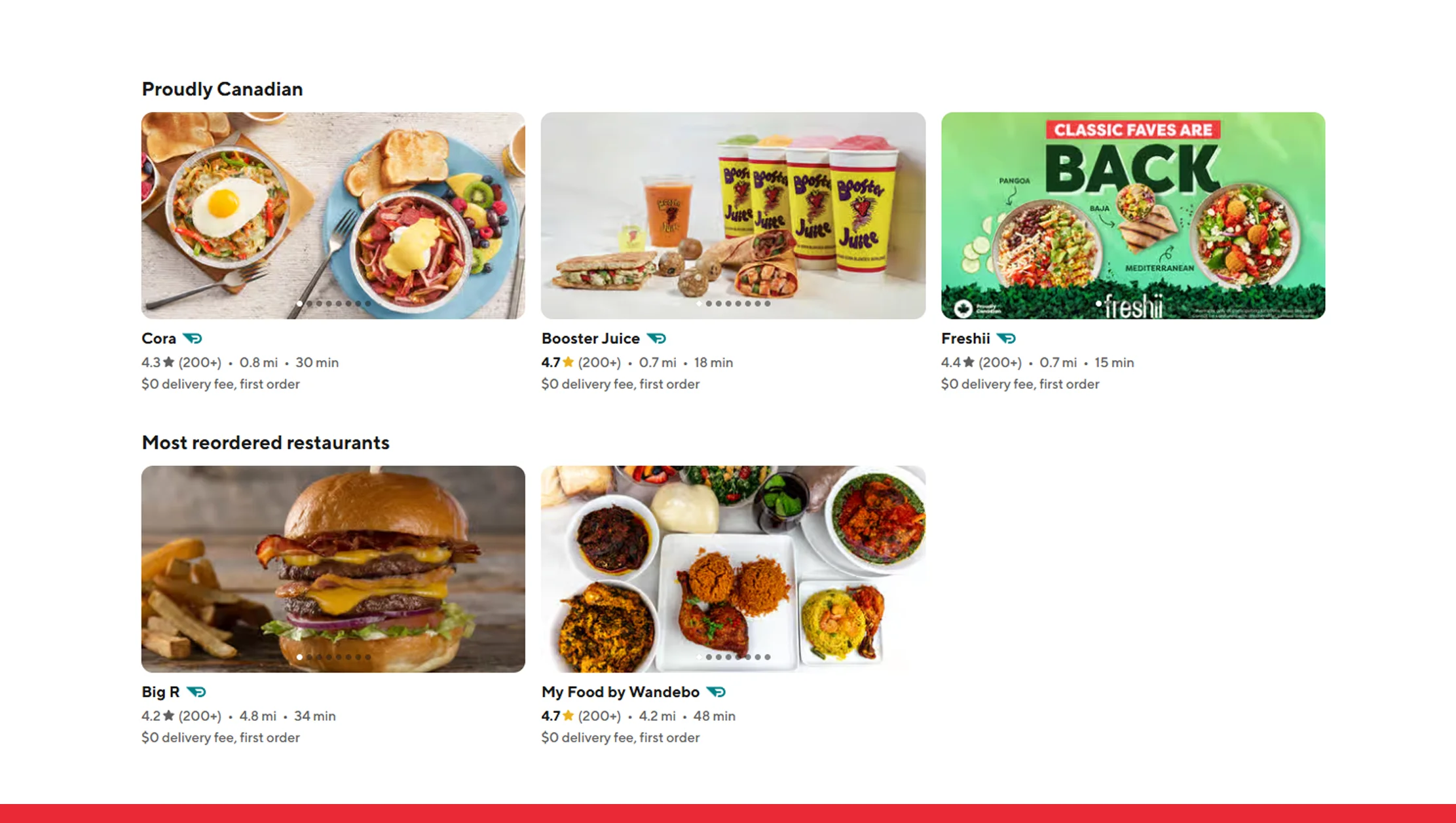
Scraping the DoorDash restaurant list is more than just gathering business names. It offers a gateway into a rich set of insights that can benefit various industries. Here's why:
Competitive Market Analysis
Scraping DoorDash allows you to analyze how many and what types of restaurants are active in your target areas. You can examine:
- Cuisine types
- Pricing models
- Customer ratings
- Delivery fees
This information is essential for food delivery startups, aggregators, and investors.
Restaurant Discovery and Localization
With hyper-localized delivery areas, it's helpful to scrape DoorDash restaurant lists by ZIP code or city. You can build regional datasets to understand:
- Which areas are saturated or underserved
- What cuisines are popular in specific neighborhoods
- Growth trends over time
Lead Generation and Partnerships
If you run a B2B service targeting restaurants, scraping DoorDash gives you a ready-to-use lead list. With phone numbers, addresses, and operational hours, your sales team is already halfway there.
Food Delivery App Enrichment
For developers working on food comparison or delivery apps, scraped data from DoorDash can provide a massive boost in content quality and customer satisfaction.
Unlock market trends and outsmart competitors—scrape the DoorDash Restaurant List for valuable insights!
Get Insights Now!Challenges in Scraping DoorDash Restaurant List
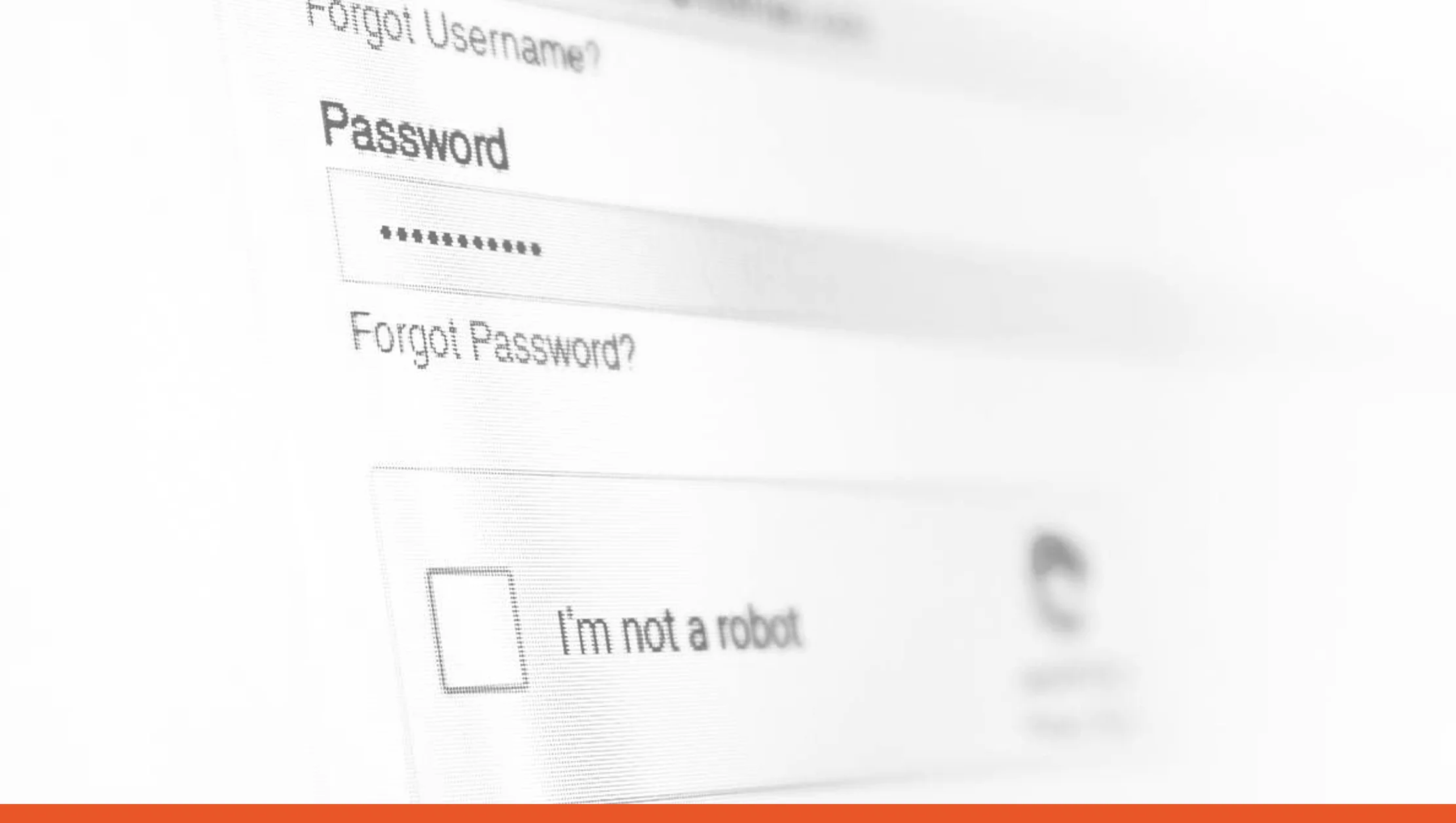
While DoorDash provides a user-friendly front-end, scraping it comes with certain obstacles:
JavaScript Rendering
Much of DoorDash’s content is dynamically loaded. This means a simple requests + BeautifulSoup scraper may not suffice.
Geo-Location and ZIP Restrictions
DoorDash serves content based on the entered delivery location. Scraping without setting a valid address might return incomplete or irrelevant data.
Anti-Bot Measures
To deter scraping, DoorDash implements:
- CAPTCHAs
- Rate limiting
- IP blacklisting
- JavaScript obfuscation
Bypassing these responsibly (using rotating proxies, randomized headers, etc.) is necessary for successful scraping.
Frequent HTML Structure Updates
Websites like DoorDash change layout and API endpoints frequently, which means your scraper might break unless it’s monitored and updated regularly.
Technologies and Tools for Web Scraping DoorDash Restaurant List
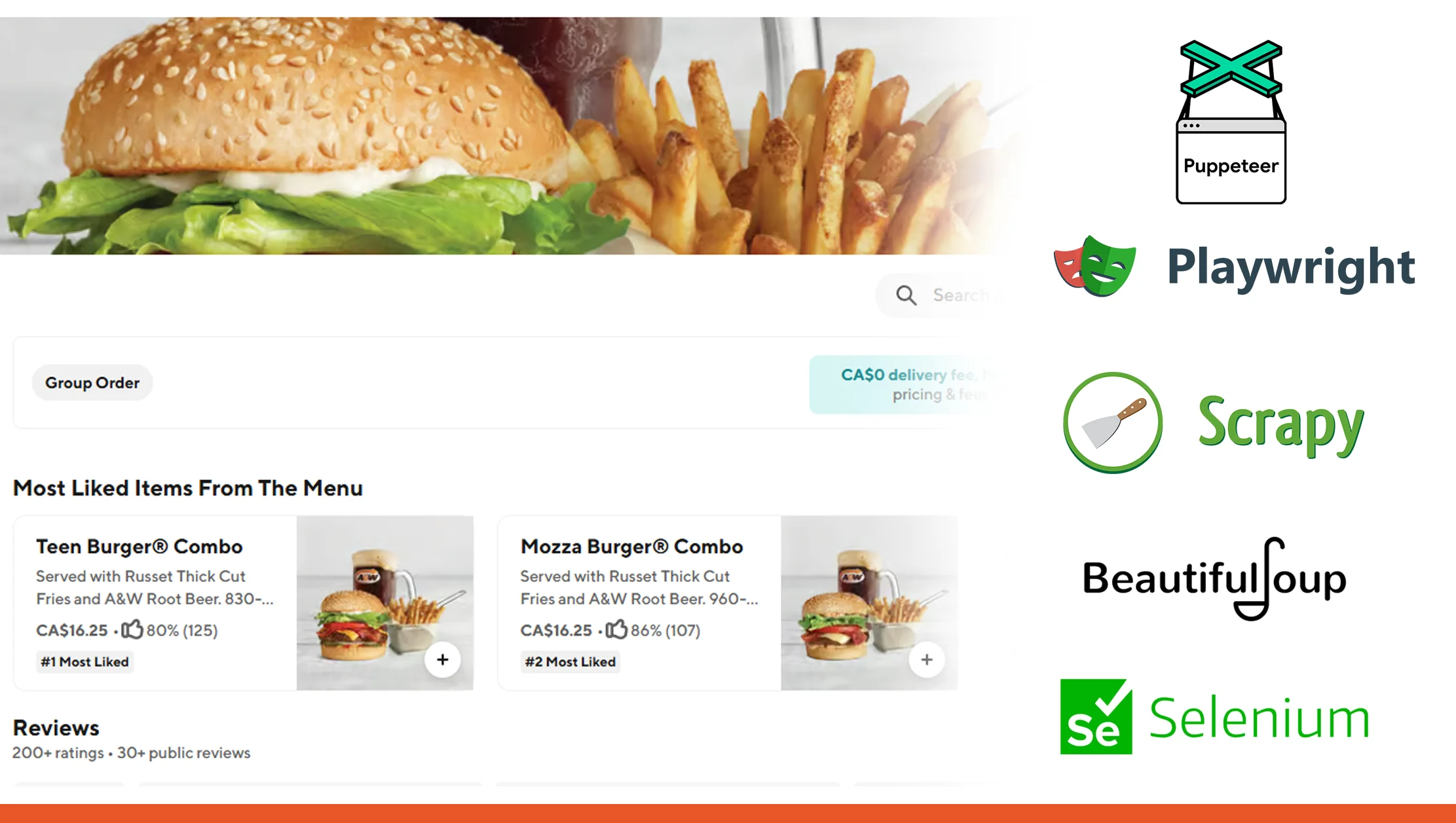
Here are some popular tools and libraries used to scrape DoorDash restaurant list and menu data:
1. Python + BeautifulSoup
For basic scraping, particularly of static pages.
2. Selenium
Ideal for interacting with dynamic content. It automates browsers and helps scrape JavaScript-rendered data.
3. Playwright
A faster, more modern alternative to Selenium. Works well with multi-tab scraping, intercepting API calls, and managing sessions.
4. Scrapy
A scalable and robust Python framework for structured data extraction.
5. Proxies + User-Agent Rotation
Use services like Bright Data or Smartproxy to rotate IPs and mimic human behavior to avoid getting blocked.
Follow our step-by-step guide to scrape DoorDash Restaurant List and gain data-driven advantages today!
Get Insights Now!Step-by-Step Guide to Scrape DoorDash Restaurant List
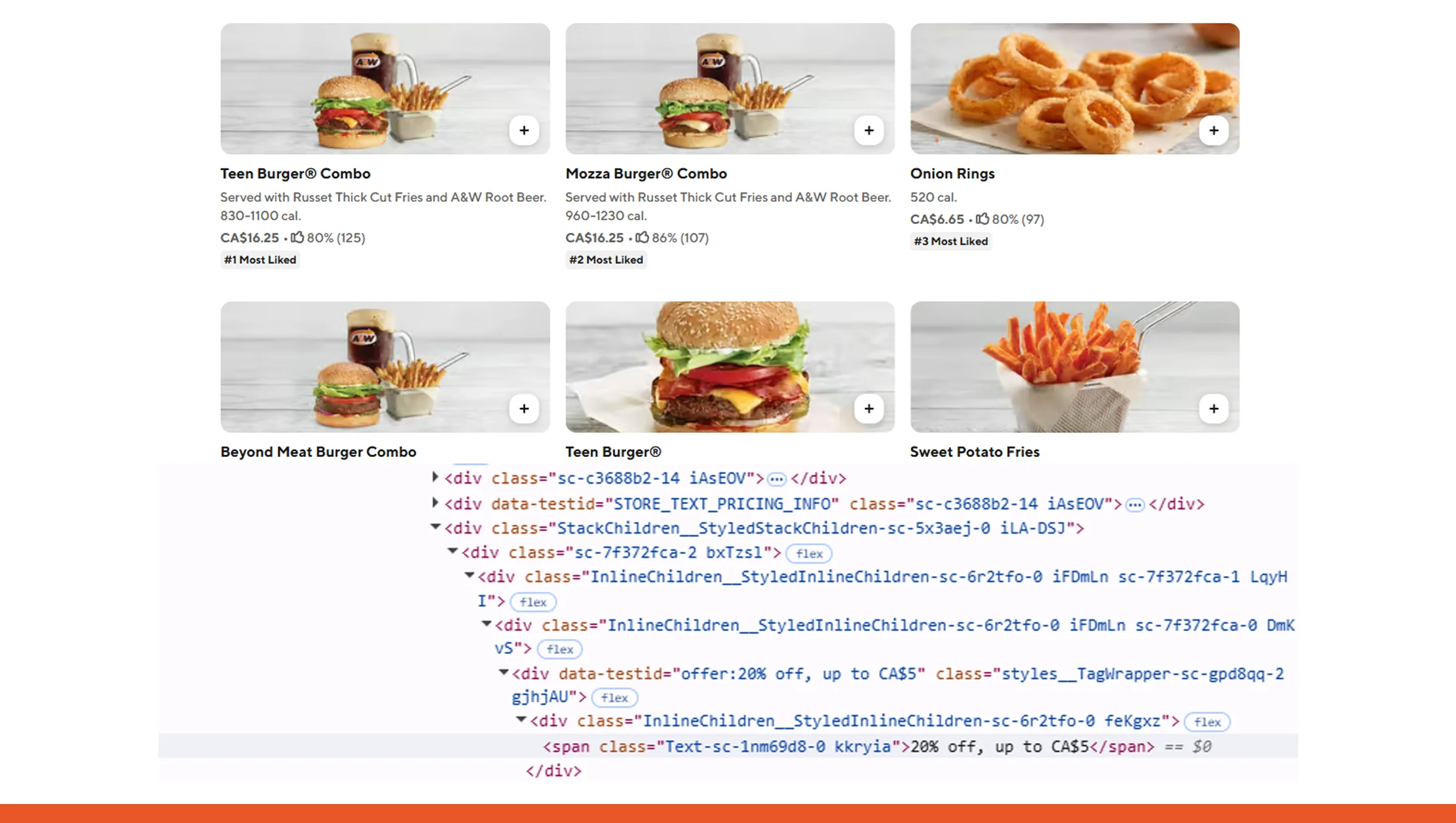
Let’s go through the process to scrape DoorDash restaurant list data effectively.
Step 1: Set Your Location
DoorDash prompts users to input a ZIP code or delivery address. Use automation tools like Selenium or Playwright to:
- Input a valid ZIP (e.g., 94105 for San Francisco)
- Wait for the page to load with location-based restaurant listings
Step 2: Capture Restaurant Data
Once on the restaurant listing page:
Scroll down to load more restaurants (infinite scroll)
Capture each restaurant’s card, which includes:
- Name
- Cuisine type
- Rating
- Delivery time
- Delivery fee
- Tags (e.g., vegetarian, alcohol)
Step 3: Store Extracted Data
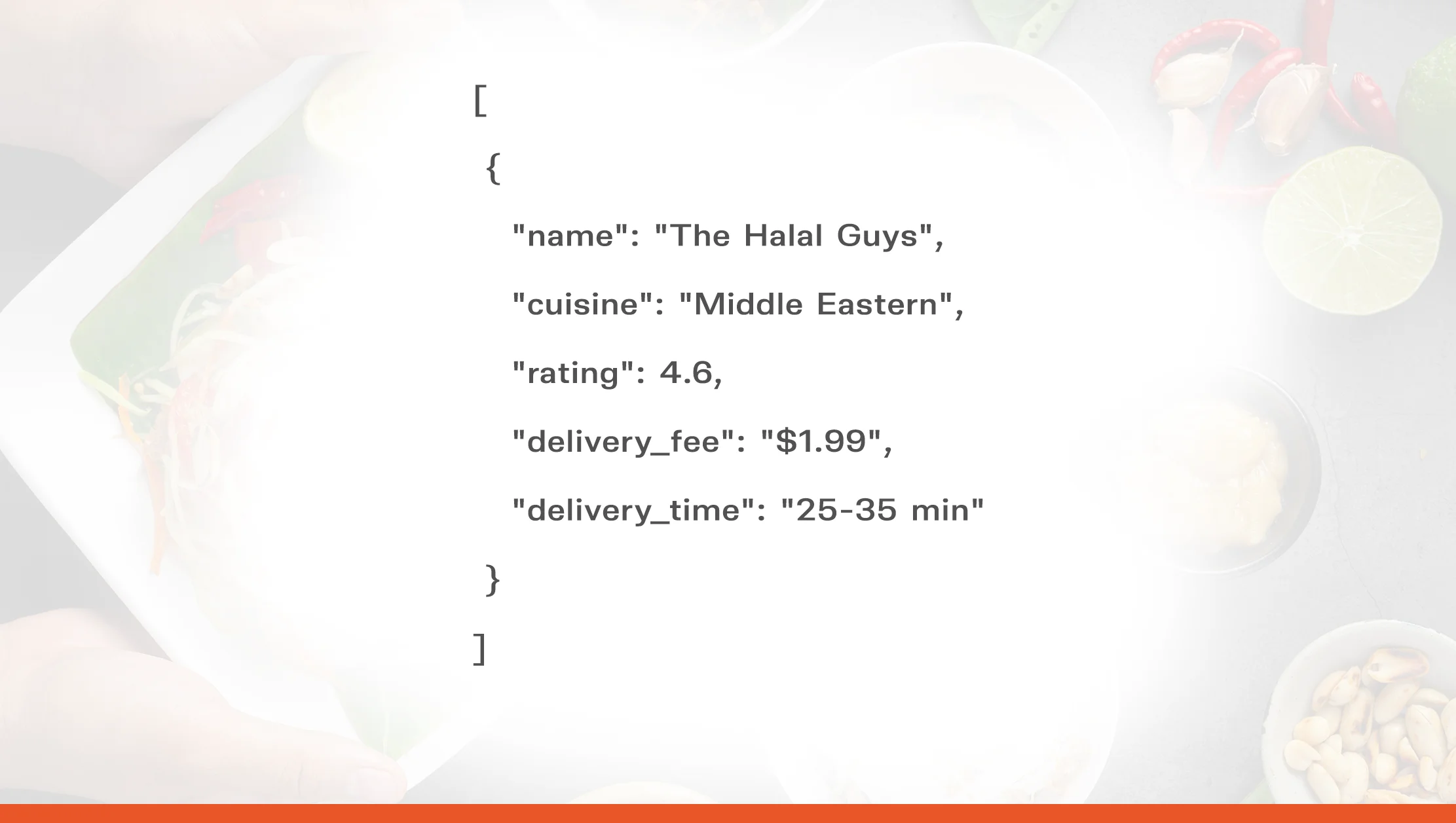
the data into a structured format:
[
{
"name": "The Halal Guys",
"cuisine": "Middle Eastern",
"rating": 4.6,
"delivery_fee": "$1.99",
"delivery_time": "25-35 min"
}
]
Step 4: Automate with Pagination
If DoorDash paginates results, iterate through the next set of listings. Otherwise, implement scrolling logic using JavaScript triggers in Playwright.
Scrape DoorDash Restaurant Menu Data
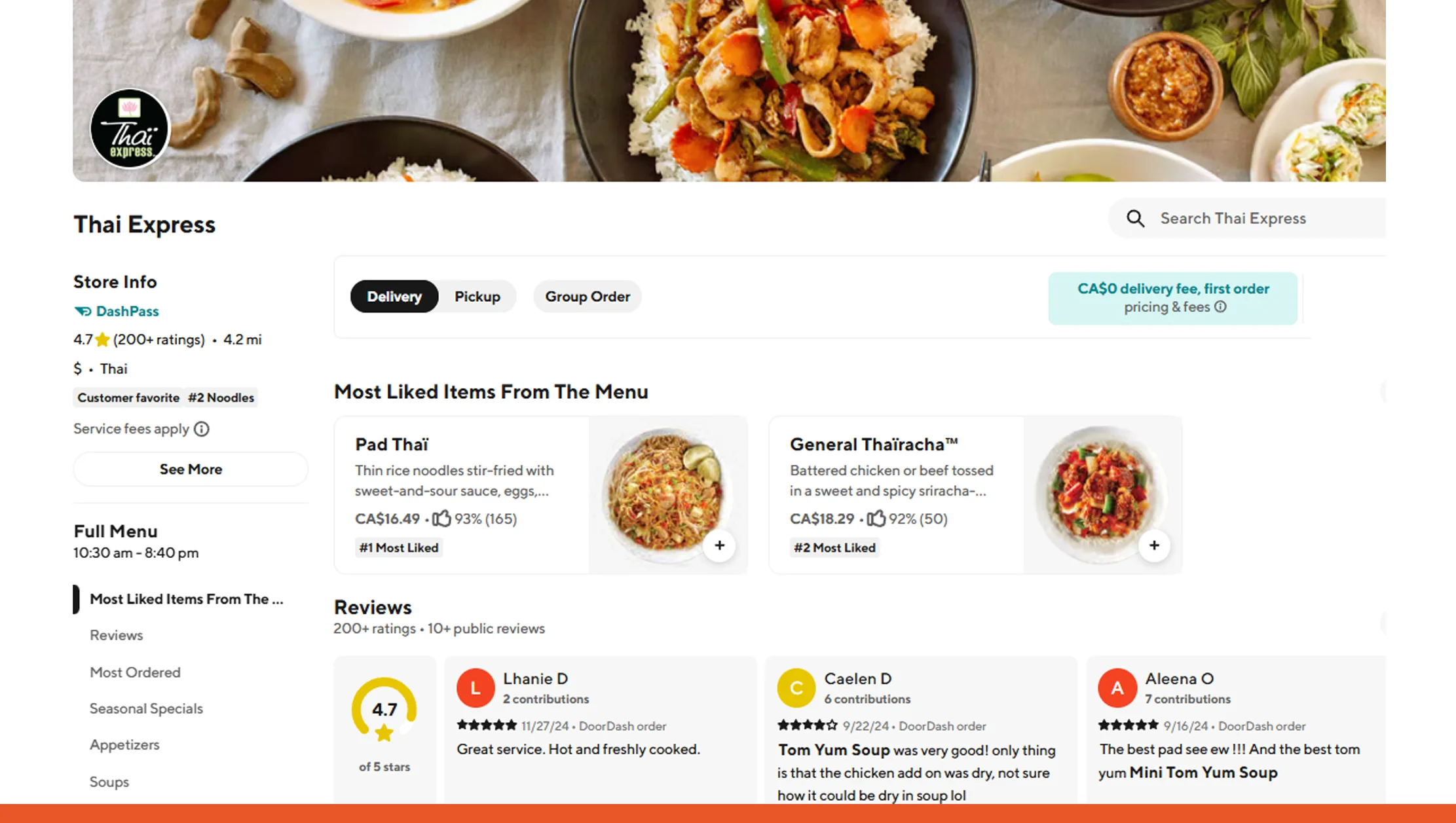
Once you have the list of restaurants, you can now scrape DoorDash restaurant menu data by navigating to individual restaurant pages.
What to Extract:
- Menu categories (Appetizers, Entrees, Desserts, etc.)
- Item names and descriptions
- Prices
- Customizations (size, spice level, add-ons)
- Images
- Tags (gluten-free, spicy, vegetarian)
- Detecting API Calls
Often, the menu data is fetched via an API behind the scenes. Use browser dev tools:
- Open the restaurant page
- Check the Network tab for JSON/XHR requests
- Capture the menu data endpoint
Sample JSON Response
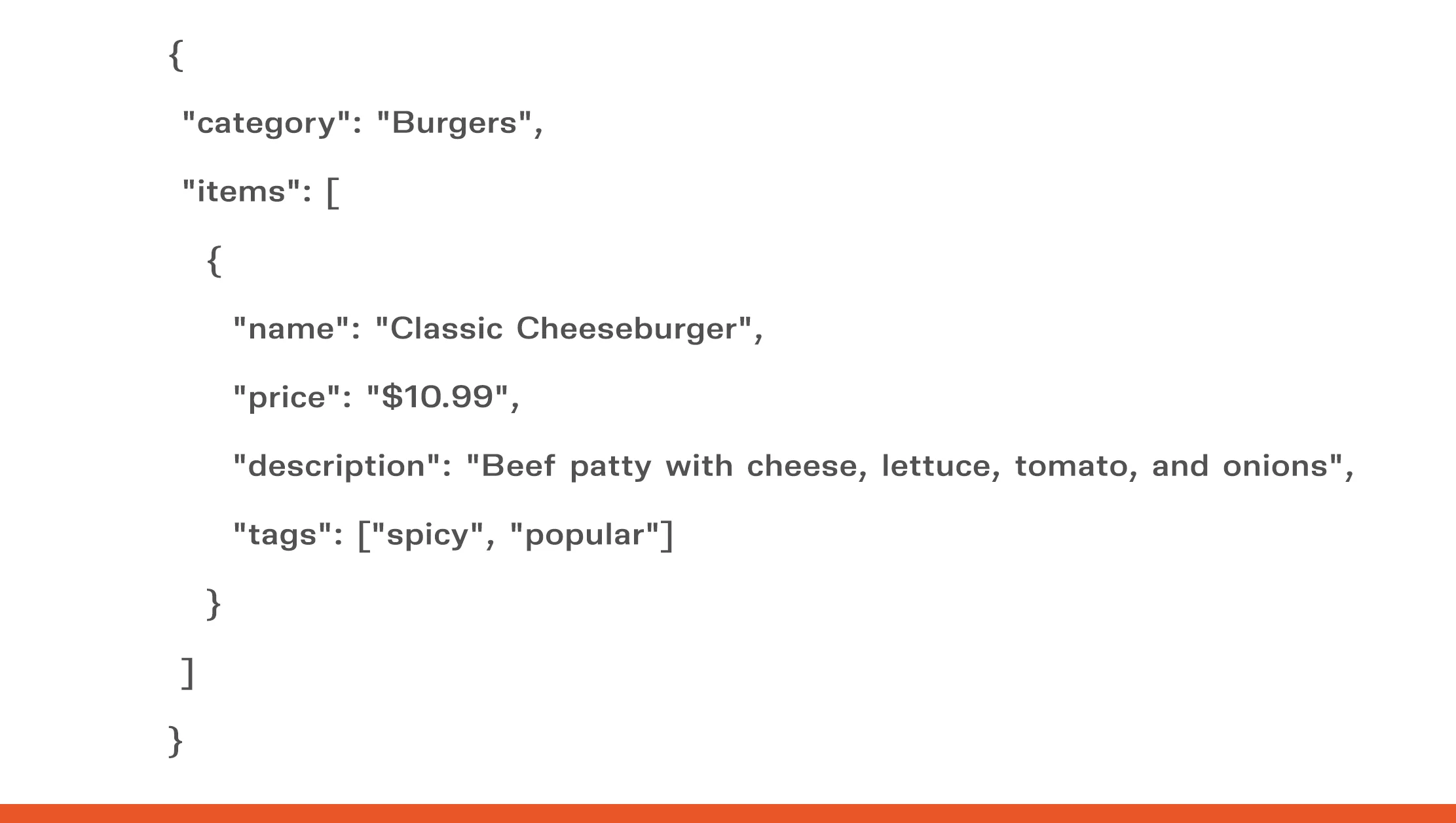
{
"category": "Burgers",
"items": [
{
"name": "Classic Cheeseburger",
"price": "$10.99",
"description": "Beef patty with cheese, lettuce, tomato, and onions",
"tags": ["spicy", "popular"]
}
]
}
This structure can be parsed and stored easily using Python’s json library or a pandas DataFrame
DoorDash Restaurant Menu Data Extraction Use Cases
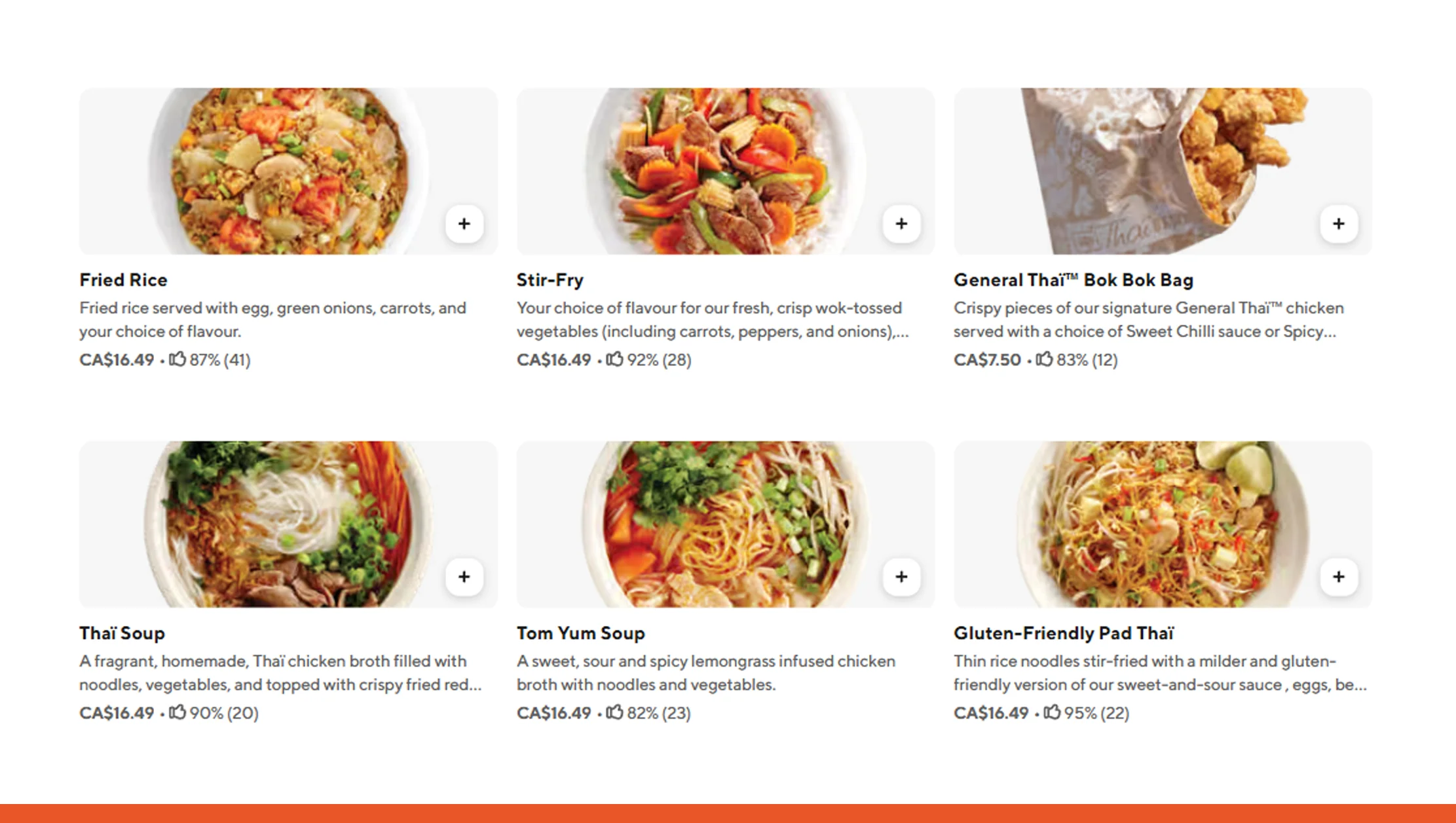
a. Price Intelligence
Competitor pricing can be compared by location, cuisine, or portion size. Useful for cloud kitchens or restaurants launching new dishes.
b. Menu Engineering
Find out which items are marked “most popular” or have better reviews. Use that data to optimize your own offerings.
c. Food App Development
Use scraped menu data to build a personalized meal planner, calorie tracker, or food discovery platform.
d. Trend Forecasting
Track when new dishes, promotions, or categories appear across regions and time periods.
Ensuring Data Accuracy and Scalability
-
Error Handling
Wrap your code with try/except blocks to avoid crashes.
-
Rate Limiting and Throttling
Set a delay between each request (2-10 seconds), or use libraries like tenacity for retrying failed requests.
-
Database Storage
Use MongoDB, PostgreSQL, or Firebase to store and query large datasets effectively.
-
Database Monitoring HTML Structure
Keep logs of your scraper runs. If zero data is returned, trigger an alert to review site changes.
Ethical & Legal Considerations
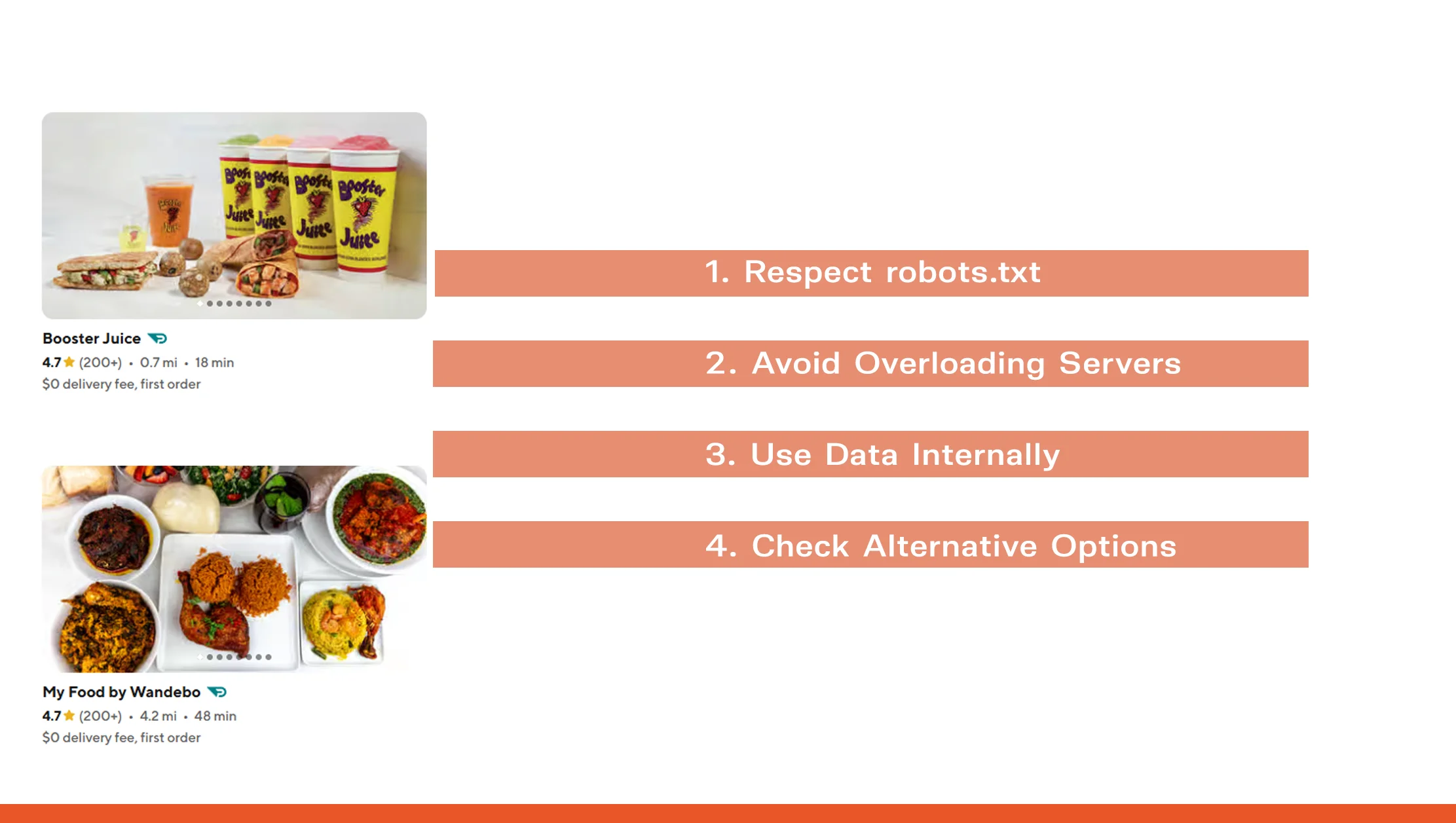
1. Respect robots.txt
Always check the robots.txt file before scraping. DoorDash currently disallows bots, so scrape responsibly for personal or internal research use.
2. Avoid Overloading Servers
Never scrape at high frequencies that could harm DoorDash's servers.
3. Use Data Internally
Scraped data should not be republished or redistributed without permission. Use it for internal insights or product improvement.
4. Check Alternative Options
Explore DoorDash’s public APIs, partner programs, or third-party data providers for approved access.
Why Choose Real Data API?
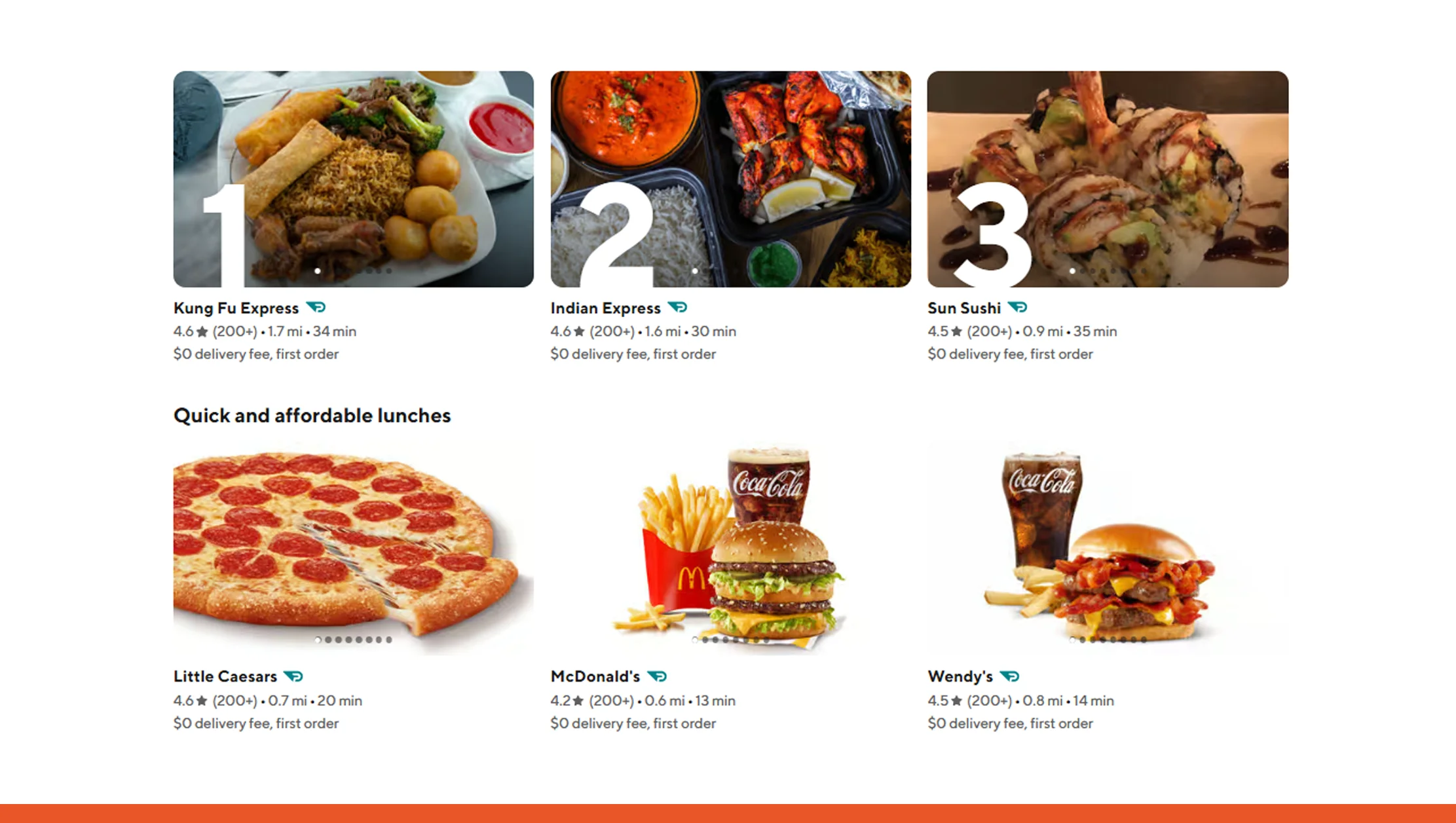
If you're planning to scrape DoorDash restaurant list or perform DoorDash restaurant menu data extraction, Real Data API offers a reliable and efficient solution. Designed for both developers and businesses, it delivers real-time, structured data without the complexity of building your own scraper. With support for high-volume requests, ethical scraping practices, and seamless integration options, Real Data API simplifies the process of web scraping DoorDash restaurant list and menu data. Whether you’re conducting market research, pricing analysis, or competitor tracking, this API ensures accuracy, scalability, and compliance—making it the smart choice for food delivery data projects.
Conclusion
Scraping restaurant and menu data from DoorDash provides immense value for businesses, developers, and analysts. From scraping DoorDash restaurant lists for competitive benchmarking to extracting restaurant menu data for product development, the applications are vast.
By using the right tools—Playwright, Selenium, BeautifulSoup—and following best practices, you can gather high-quality, structured data. Just remember to scrape ethically, monitor for changes, and continuously improve your scraping pipeline.
With DoorDash restaurant and menu data at your fingertips, you're ready to drive smarter decisions in the dynamic food delivery landscape















